NIL
Highest NIL Earning Recruiting Classes
On the 2025 Oregon Ducks football team, senior wide receiver Evan Stewart looks to be the biggest Name, Image, Likeness (NIL) earner. The six-foot Texas native has a valuation worth $1.7 million and roster value placed at $761K which ranks as the No. 26 highest from a recruit in the country, on On3 NIL Valuations. […]


On the 2025 Oregon Ducks football team, senior wide receiver Evan Stewart looks to be the biggest Name, Image, Likeness (NIL) earner. The six-foot Texas native has a valuation worth $1.7 million and roster value placed at $761K which ranks as the No. 26 highest from a recruit in the country, on On3 NIL Valuations.
Next for the Ducks is Tulane Green Wave transfer running back Makhi Hughes. The redshirt junior is ranked No. 58 among his peers with both an NIL valuation and roster value of $1.1 million.
Across the Big Ten Conference’s NIL average per recruit in the 2026 class, Oregon coach Dan Lanning’s team is ranked No. 3. A surprising team is No. 1, topping Oregon and College Football Playoff National Champions Ohio State Buckeyes.
Here are how the 18 college football programs stack up with each other:
No. 1 Maryland Terrapins ($190K)
No. 2 Ohio State Buckeyes ($158K)
No. 3 Oregon Ducks ($152K)
“I think it’s impressive that guys like Kirby (Smart) have been signing the number one class in the nation without any NIL money this entire time… But if you want to be a top 10 team in college football, you better have great support. We have that. It’s our alignment with our entire university that makes our recruiting work.”
– Dan Lanning via The Pat McAfee Show
No. 4 USC Trojans ($143K)
No. 5 Michigan Wolverines ($134K)
No. 6 Washington Huskies ($95K)
No. 7 Penn State Nittany Lions ($70K)
Tied for No. 8 Rutgers Scarlet Knights ($40K)
Tied for No. 8 Nebraska Cornhuskers ($40K)
No. 10 UCLA Bruins ($39K)
No. 11 Michigan State Spartans ($38K)
No. 12 Iowa Hawkeyes ($37K)
No. 13 Minnesota Golden Gophers ($25K)
Tied for No. 134 Illinois Fighting Illini ($22K)
Tied for No. 13 Northwestern Wildcats ($22K)
No. 16 Indiana Hoosiers ($19.6K)
No. 17 Wisconsin Badgers ($13.9K)
No. 18 Purdue Boilermakers ($13.3K)
MORE: Dallas Cowboys Wide Receiver Traeshon Holden ‘Hurt’ After Going Undrafted
MORE: 5-Star Quarterback Jared Curtis To Commit To Oregon Ducks, Georgia Bulldogs?
MORE: Best Uniforms In Big Ten Ranked: Oregon Ducks, Michigan Wolverines, Ohio State Snubbed?
The Big Ten was arguably the most competitive league in college football in 2024, ahead of the Southeastern Conference. That’s simply based on the fact that the Big Ten had four teams invited into the 2024 College Football Playoff field (No. 1 Oregon, No. 6 Penn State, No. 8 Ohio State, No. 10 Indiana), one more than the SEC’s three teams (No. 2 Georgia Bulldogs, No. 5 Texas Longhorns, No. 9 Tennessee Volunteers).
Within On3’s top 100 NIL valuations, 23 total recruits come from the Big Ten. The SEC has 37 total recruits. Texas junior quarterback Arch Manning of the SEC is the No. 1 ranked player with a valuation worth a whooping $6.6 million and roster value placed at $4.2 million. Ohio State sophomore wide receiver Jeremiah Smith of the Big Ten stands at $4 million and $3.2 million, respectively.
The Buckeyes and coach Ryan Day won the national championship after an opening round win by taking care of the No. 12 Clemson Tigers, upsetting the Ducks at the Rose Bowl in the next round, then beating the Longhorns at the Cotton Bowl, and finally overcoming the No. 7 Notre Dame Fighting Irish to win it all.
NIL
Matt Rhule reveals how Nebraska will approach walk-ons after roster limits take effect
Throughout Nebraska football’s history, walk-ons have been an important part of the program. The Cornhuskers have traditionally carried a larger roster with non-scholarship players – but things could be changing in the new college football landscape. Roster limits are coming to college athletics, and that number will be at 105 for football. That creates uncertainty […]
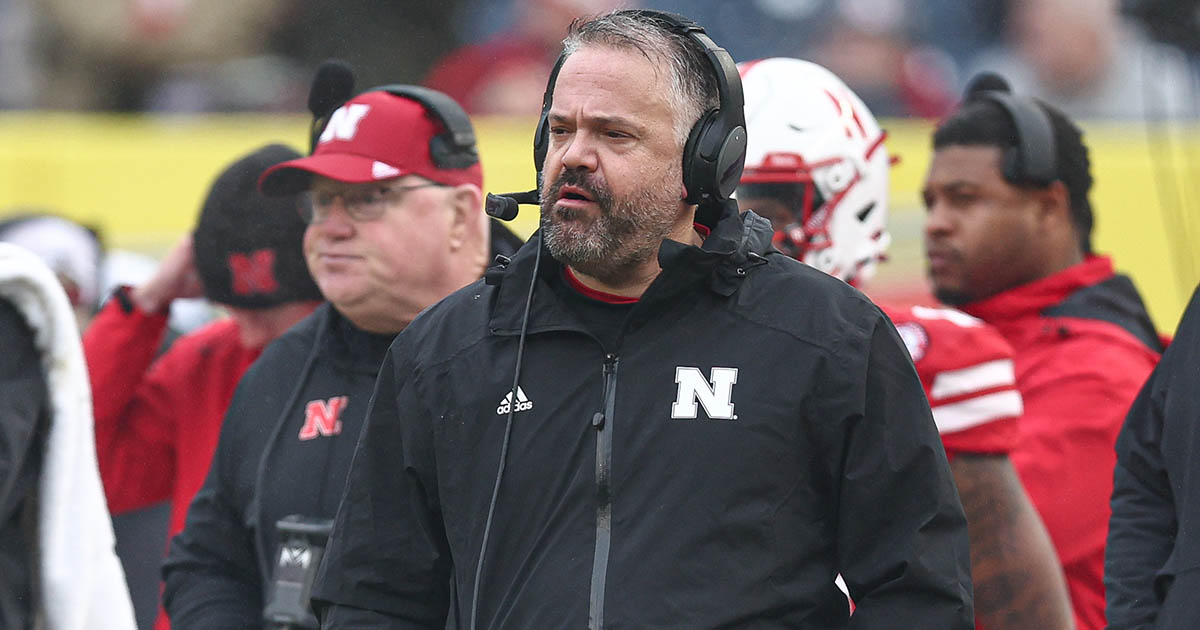
Throughout Nebraska football’s history, walk-ons have been an important part of the program. The Cornhuskers have traditionally carried a larger roster with non-scholarship players – but things could be changing in the new college football landscape.
Roster limits are coming to college athletics, and that number will be at 105 for football. That creates uncertainty around the future of walk-ons, and Matt Rhule has been outspoken about their importance to not only Nebraska, but the sport as a whole.
Now that the House v. NCAA settlement has full approval, roster limits will be on the way. Rhule weighed the impact it can have on the sport and confirmed Nebraska will still find a way to carry walk-ons and maintain that proud tradition.
“I know people here at Nebraska, we don’t love the fact that we can’t carry the larger roster, which has been part of our culture,” Rhule told Greg McElroy on Always College Football. “But we won’t get rid of it all together. We’ll still take some walk-ons. It’ll be, maybe, a little bit harder.
“But I hope those kids that would’ve walked on here, now, they’re at other schools in the Dakotas, the FCS schools in the Midwest and really elevate that level of football.”
Matt Rhule does not ‘love’ roster limits
As the House v. NCAA settlement went through the final approval process, uncertainty swirled – specifically for athletes who could have lost spots on rosters as a result of the new limits. However, the final agreement included a provision to “grandfather” spots for those athletes at schools’ discretion.
In the meantime, as rosters begin to downsize, Matt Rhule said the non-power conferences could see a boost in talent. That includes non-FBS programs, as well as those in Division II and Division III. It could create parity, although Rhule said he’s still skeptical about the idea of roster limits.
“On the positive side, you’re hoping that it pushes more really good players into positions of success at the Group of 5 level, FCS, Division II, Division III and downward,” Rhule said. “Sitting on the bench for four years at a school where you’re not going to play, maybe you’ll go somewhere and play.
“I don’t love the roster limit, I think we’re always looking for ways to create parity that aren’t really real. I would much rather just say, hey, this is the amount of guys that can dress on game day. But that was the rule. We’re going to stick to it.”
NIL
Is Oregon’s NIL and Recruiting Ahead of Everyone?
Oregon is getting beat on the recruiting trail pretty badly this off-season. It’s been ages since the program has had a major win. It appears that Dan Lanning and Oregon’s main NIL cooperative, Division Street, may be changing their strategy, with a greater focus on spending NIL dollars in the transfer portal rather than on […]

Oregon is getting beat on the recruiting trail pretty badly this off-season. It’s been ages since the program has had a major win. It appears that Dan Lanning and Oregon’s main NIL cooperative, Division Street, may be changing their strategy, with a greater focus on spending NIL dollars in the transfer portal rather than on high school recruits. Mr. FishDuck took a break from figuring out his betting payouts on the expected value calculator–to express his concern as many Duck fans have.
At this point in the year, this can feel like a good explanation for Oregon’s recruiting woes, but the reality is that Oregon doesn’t like to get in bidding wars concerning NIL allocation until December, right before the early signing period. For the most part this strategy has worked for the Ducks and this likely explains what is happening right now regarding Oregon’s recruiting woes.
The Ducks and Division Street refuse to get into a bidding war this early in the recruiting cycle and are continuing to recruit many of these committed athletes. However, if some of these NIL deals hold to the end of the cycle, the Ducks may be left with a small prep recruiting class, and thus a change in strategy is prudent.
USC and Others Are Spending Money Like It’s 2022
Through this recruiting cycle so far, some programs have gotten more active in NIL and they are playing the game like it is 2022. USC, for instance, seems to be throwing millions at recruits right now, and according to Athlon Sports, their NIL cooperatives are going to pay Mater Dei tight end Mark Bowman $10 million to come and play at USC — more than most NFL tight ends make, let alone rookies.
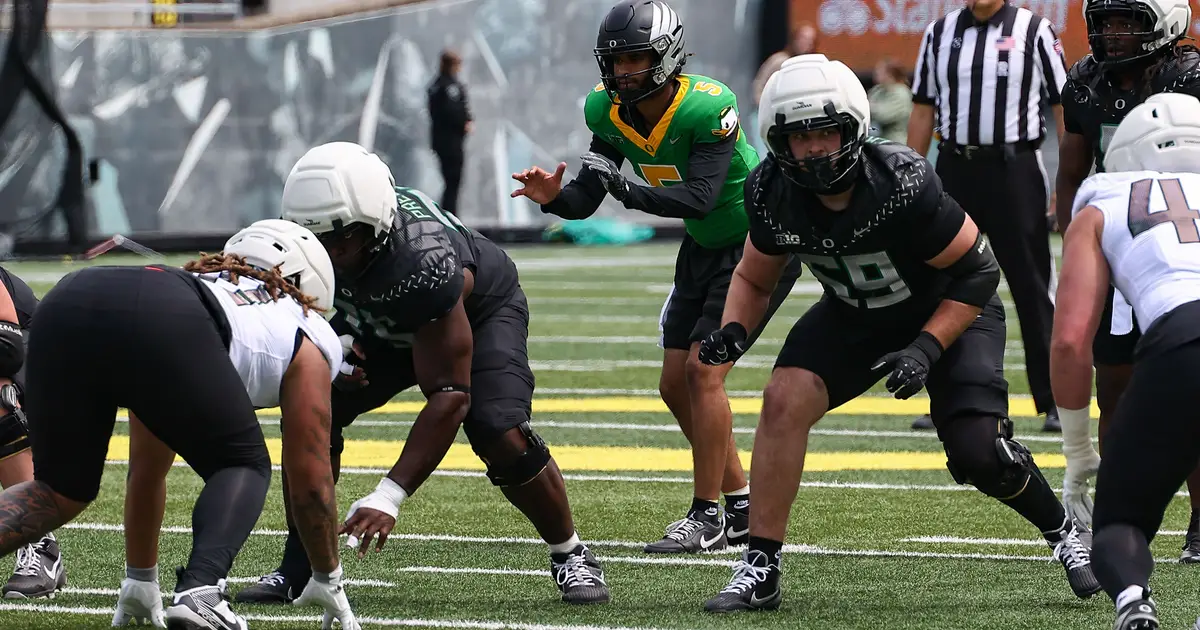
Emmanuel Pregnon (left) lined up at left guard during the Oregon Spring Game. (Photo By: Gary Breedlove)
There are also reports of absolutely insane requests being made by recruits this cycle, like charted flights for their families to all their games and leases on luxury vehicles. There are also reports of recruits being paid to just commit and stay committed.
And we have already seen this story before. In 2022, Texas A&M spent by far the most on their No. 1 recruiting class, and that class failed to save Jimbo Fisher’s job and has since imploded. Furthermore, Tennessee signed Nico Iamaleava in 2023 to a multi-million dollar contract, and his on-field results have been underwhelming for a price tag that high. He transferred out of Tennessee when he failed to leverage the program’s NIL for more money.
USC’s NIL cooperatives have woken up and are spending money like it’s 2022. And they are recruiting like it too. They are buying their recruiting class without learning from the history of how this has played out in the past. I don’t blame a high school recruit like Bowman for taking that payout — that is enough money to set him up for life.
But what is also clear is that USC is not spending enough of their NIL resources on maintaining their roster. Otherwise, they never would have let their best lineman, Emmanuel Pregnon, transfer out and go to Oregon.
Lanning and Division street are too savvy to play this NIL game and as a result, they are possibly changing their strategy.
Using All of College Football as a Feeder League
Focusing on the transfer portal to fill holes in the roster with proven recruits is a better way of spending Oregon’s NIL money. However, this strategy shift only works because Lanning has proven that he can go into the portal and effectively get whomever he wants, including two of the most coveted positions out of the portal, offensive and defensive linemen.
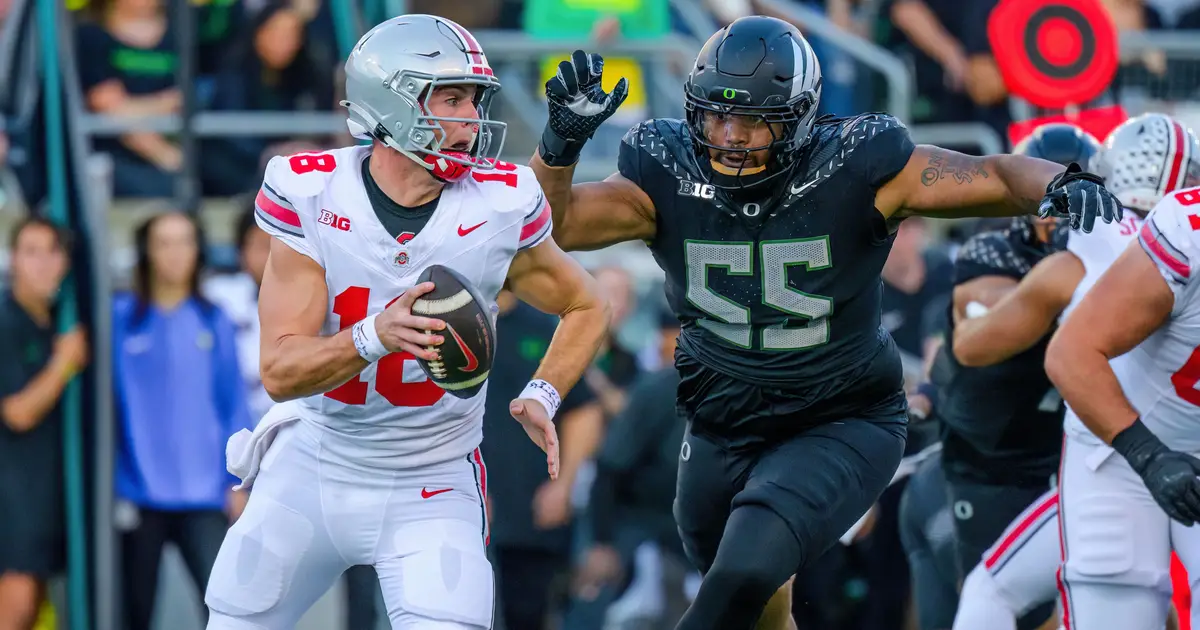
Derrick Harmon puts fear into Ohio State quarterback Will Howard in October 2024. (Photo By: Eric Becker)
Ajani Cornelius was the best offensive lineman of 2023 in the transfer portal, and Ohio State was pushing for him before he settled on Oregon. He was developed at Oregon and drafted in the sixth round of this year’s NFL draft. Additionally, Derrick Harmon transferred from Michigan State to Oregon in 2024 and certainly elevated his draft stock. He was still likely to be drafted if he stayed at Michigan State, but in transferring to Oregon, he elevated his skills to where he became a first-round pick.
Outside of offensive and defensive line positions, Lanning and his staff has proven they can develop transfer players into draft picks. Bo Nix is probably the poster child for this. He was unlikely to be drafted at all if he stayed with Auburn, but in his two years at Oregon, he boosted his stock enough that he was taken No. 16 overall and had a fantastic rookie season with Denver.
This point was emphasized by one of the best safeties in the 2025 transfer portal, Dillon Thieneman, when he explained why he chose Oregon: “I saw that Oregon’s really good at taking in transfers and developing them and transitioning them to the next level.” With this reputation, Lanning gets almost anyone he wants out of the portal.
This all emphasizes the difference between recruiting the transfer portal instead of high schoolers. For transfer portal recruits, their priorities tend to be fair pay via NIL, a chance to compete at the top of college football, and the opportunity to elevate their draft stock — all of which Oregon can provide.
This means Oregon can rebuild every year with the best players from other teams who are proven college talent. Just on the offensive line, this year Oregon landed: Alex Harkey from Texas State, Isiah World from Nevada, and Pregnon from USC. All of these linemen were huge gets for Oregon, as they were some of the best linemen in the portal.
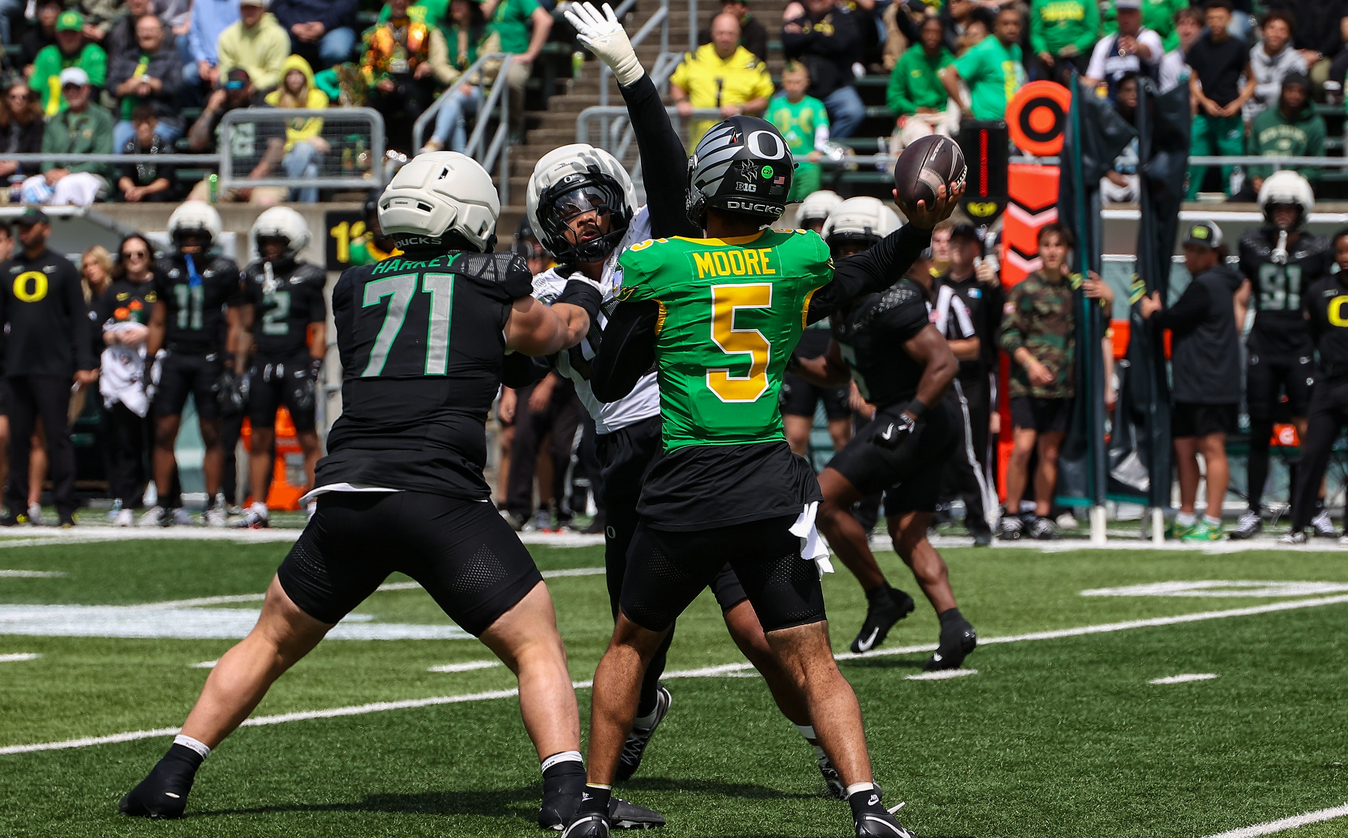
Alex Harkey protects Dante Moore in the Spring Game. (Photo By: Gary Breedlove)
In addition to adding Thieneman from Purdue, Oregon landed another defensive back from a B1G team, Theran Johnson from Northwestern. On the face of it, neither of these players come from teams at the top of the B1G as both are typical conference basement dwellers. However, Oregon picked up two experienced players who were perhaps the best players on their former teams.
Oregon is using the rest of college football as feeder programs, not unlike Ohio State and other major programs. They are letting other programs develop diamonds in the rough and then taking them once they hit the portal, continuing their development, and elevating them to the next level.
The position Oregon is in has become highly unique at this stage of the transfer portal. Oregon can supplement their roster with the best players from teams all over the country, including the B1G and SEC. Oregon is able to treat the majority of the college football programs as feeder programs. These teams bring in undiscovered talent that they develop, and then Oregon and other top tier programs take from the transfer portal and polish them into higher NFL draft picks.
Oregon does this at a far more sustainable and reasonable NIL cost than the method many other college football programs are taking this year. Is this what Oregon is doing, or am I outright sunshine pumping Oregon’s transfer recruiting while the Ducks continue to struggle with prep recruits?
David Marsh
Portland, Oregon
Top Photo By: Gary Breedlove
 Andrew Mueller, the FishDuck.com Volunteer Editor for this article, works in higher education in Chicago, Illinois.
Andrew Mueller, the FishDuck.com Volunteer Editor for this article, works in higher education in Chicago, Illinois.
Share your thoughts about this team in the only free, “polite and respectful” Oregon Sports message board, the Our Beloved Ducks forum!

David Marsh is a high school social studies teacher in Portland, Oregon. As a teacher he is known for telling puns to his students who sometimes laugh out of sympathy, and being both eccentric about history and the Ducks.
David graduated from the University of Oregon in 2012 with Majors in: Medieval Studies, Religious Studies, and Geography. David began following Ducks Football after being in a car accident in 2012; finding football something new and exciting to learn about during this difficult time in his life. Now, he cannot see life without Oregon football.
NIL
New Season, New Roster
Nebraska basketball looks to turn the page after a rough 2024-25 season that started 1-7 and ended with a conference record of 7-13 and an overall record of 21-14. The Cornhuskers would go on to miss out on both the NCAA Tournament and the Big Ten Conference Tournament. Head coach Fred Hoiberg is going into […]


Nebraska basketball looks to turn the page after a rough 2024-25 season that started 1-7 and ended with a conference record of 7-13 and an overall record of 21-14. The Cornhuskers would go on to miss out on both the NCAA Tournament and the Big Ten Conference Tournament.
Head coach Fred Hoiberg is going into his seventh season with the Cornhuskers looking to improve on a 12th-place finish in the Big Ten and his second NCAA Tournament appearance with Nebraska. While Hoiberg hasn’t been labeled as a hot seat candidate going into the 2025-26 season, his .438 win percentage and 84-108 record has fans questioning if it’s time for a change in Lincoln.
Nebraska’s incoming signees and transfer portal additions have fans excited, expecting this new-look roster to take a leap and compete in a talented Big Ten. Despite having the sixth highest scoring bench in the Big Ten last season, Nebraska’s offense lacked aggression and consistency, finishing in the bottom half of the conference in overall scoring. Senior Brice Williams’ 20.4 points per game will leave a major hole in Fred Hoiberg’s offense. His playmaking skills and ability to attack the rim made him one of the most versatile guards in the Big Ten.
Rising junior Connor Essegian is an early breakout candidate after making his impact on the court last season from the three point line, shooting 37 percent from three and ranking in the top ten for three pointers made in the Big Ten. The former Wisconsin Badger enters his second season with Nebraska, aiming to play a vital role in Fred Hoiberg new-look offense, with hopes of guiding the Cornhuskers on a deep run in late March
On the defensive end, the Cornhuskers ranked just inside the top five in steals per game, led by senior Sam Hoiberg, son of head coach Fred Hoiberg. Nebraska’s defense finished the season as the sixth team in the Big Ten in turnovers forced per game, showcasing their ability to guard both inside and outside the perimeter. Senior Juwan Gary played a key role in Nebraska’s defensive success, leading the team in blocks and averaging five rebounds per game. Gary’s presence in the paint helped the Cornhuskers rank inside the top five in defensive rebounds per game in the Big Ten.
While Nebraska is heading into next season without key pieces like Williams and Gary, new additions such as freshman Fridrik Leo Curtis, transfer Kendall Blue from St. Thomas-Minnesota Tommies Kendall Blue, and former Tulsa forward Jared Garcia will look to make an impact from day one.
Standing at 7 ‘1”, Iceland native Fridrik Leo Curtis is one of the most promising prospects in college basketball. Despite his size, Curtis’ outstanding footwork and dominance on the defensive end makes him a vital piece under head coach Fred Hoiberg’s system from day one. Curtis is not only a threat inside the paint but also a game-changer from beyond the arc with his deep three-point range. In the 2023-24 Iceland D-1 season, Curtis averaged 15 points and eight rebounds per game while shooting over 40 percent from three, showing flashes of his offensive versatility, and displaying his dominance on the defensive end.
Similar to NBA center Kristaps Porzingis, Curtis’s ability to create space for himself and others allows him to thrive in the paint, consistently creating mismatches and drawing fouls. His unique ball movement skills and off-the ball impact make him a nightmare for opposing defenses. With a strong presence under the rim, teams will think twice before attacking the paint, making him a true difference-maker on booths ends of the floor.
Former St. Thomas-Minnesota Tommies standout guard Kendall Blue, is coming off a career year in which he averaged 12 points per game and shot over 50 percent from three, helping St. Thomas reach the Summit League Championship. Blue ranked in the 99th percentile in catch-and-shoot attempts, with 72 percent effective field goal percentage. While Blue is an outstanding shooter, he also possesses an explosive scoring ability-reminiscent of Anthony Edwards ability to attack the paint.
While Nebraska fans may not yet be familiar with Blue’s game, his strong first step, athleticism, and ability to create his own shots will quickly turn heads, and make him an impactful player for Fred Hoiberg’s offense.
Jared Garcia, former Tulsa forward and junior college transfer, will take advantage of the NCAA’s bylaw granting junior college transfers an additional year of eligibility as he looks to thrive and help this new-look Nebraska team on both sides of the floor. The versatile big man from Tulsa came from a career-best season, shooting 46 percent from the field. Garcia took over in Tulsa’s American Athletic Conference Championship Quarterfinal against Temple, with a 20 point performance and hitting a go-ahead three in the final 60 seconds of the game. His skillset is very similar to longtime NBA veteran Zach Randolph, with a unique post up game and effectiveness to sneak in the paint, excelling in the paint with his strong finishes.
Nebraska will look to thrive with a revamped roster this upcoming season, as fans expect the Cornhuskers to play meaningful games down the stretch, with hope of making a deep run in March. Head coach Fred Hoiberg is eager to put Nebraska basketball back on the map on what looks to be a promising and vital season for the seventh year head coach.
Stay up to date on all things Huskers by bookmarking Nebraska Cornhuskers On SI, subscribing to HuskerMax on YouTube, and visiting HuskerMax.com daily.
NIL
College
Chronicle Telegram Subscribers: Don’t miss out! – Activate your full website and E-edition access! Non-subscribers: Shop our offers. 0
NIL
What Big Ten schools are saying
The Big Ten and SEC have been encouraging the College Football Playoff landscape to change, and the NCAA has yet to find a stable, consistent format that makes everyone happy. The 2024-25 CFP format was a 12-team playoff bracket with the five, highest-ranked conference champions receiving automatic bids. The top four conference champions received a […]

The Big Ten and SEC have been encouraging the College Football Playoff landscape to change, and the NCAA has yet to find a stable, consistent format that makes everyone happy.
The 2024-25 CFP format was a 12-team playoff bracket with the five, highest-ranked conference champions receiving automatic bids. The top four conference champions received a bye in the first-round. The other seven spots were filled out by the highest-ranked teams remaining, according to the CFP Selection Committee. This format revised the original bracket that included the six, highest-ranked conference champions with the leftover spots filled by the six, highest-ranked teams remaining.
Heading into he 2025-26 season, the picture is still under revision.
How the College Football Playoffs format could look in 2025-26
In May 2025, the CFP format was officially tweaked again, according to ESPN. It was decided that CFP would take on a straight seeding format with the highest-ranked conference champions still receiving an automatic bid. The four highest-ranked of all 12 qualifying teams, regardless of if they are a conference champion or not, would receive a bye in the first-round.
This still did not appease all conferences in the NCAA, notably the Big Ten and SEC. In return, the commissioners decided for a total do-over, according to Brett McMurphy on X, to determine what the 2026 CFP format will look like.
The Big Ten and SEC pushed for their conferences to have four automatic qualifiers and the ACC and Big 12 to have two per conference. As expected, the ACC and Big 12 opposed this pitch and eventually the SEC followed suit. Instead, the SEC, ACC, and Big 12 openly supported the 16-team playoff bracket with five automatic qualifiers and 11 at-large teams.
The Big Ten and SEC butt heads over regular season schedules influencing the CFP format
Alongside the 16-team bracket, the SEC wants strength-of-schedule to be an important deciding factor for the committee wen ranking teams. Not only does the conference as a whole support this but so do individual players.
Vanderbilt quarterback Diego Pavia said on a podcast that certain conferences are not challenged week after week in the regular season.
“You want to play with the best – you don’t want to play with the Big Ten … You ignore those calls,” Pavia said on the “Bussin’ With The Boys” podcast, according to Spartans Wire. ” … The SEC, it’s like week after week. You’re going to get beat on. The Big Ten, you’re not gonna get beat on with the Purdue, Nebraskas.”
Determining the playoff bracket with strength-of-schedule being one of the most important factors, though, also leads to some questions. If SEC schools, like Vanderbilt, were thrown into schedules from other conferences, it can’t be said for certain that they wouldn’t struggle.
Some conferences also don’t play the same number of league games, which goes into their schedule strength or lack thereof. The SEC, for example, plays eight league games while the Big Ten plays nine in the regular season. The Big Ten has also encouraged playing an SEC school in the regular season, but the SEC continues to oppose this idea.
“I don’t think there’s any way we can do a 16-team playoff if [the SEC is] not at nine,” Illinois head coach Bret Bielema said.
As for Penn State, committee bias remains a larger issue.
“There’s all these complaints about the BCS, but then we go to this, and I think it goes back to really, my answer is, the problem is, everybody voting and everybody involved in the process — whether you want to be biased or not, we all are biased,” Franklin said, according to CBS Sports in early June.
When commenting on selection committee bias, though, the Nittany Lions’ 2025 playoff fate was not something fixing bias would change. If anything, switching to a 16-team bracket would help improve objectivity as opposed to the Big Ten-pitched model that automatically gave two conferences eight playoff seeds.
At the latest, the 2026 CFP format must be finalized on Dec. 1. With the straight seed format still in consideration and conferences throwing in their wants and opinions, the playoff landscape will likely be up in the air for a while.
NIL
Texas Tech softball is going all in a year after Gerry Glasco's arrival
Gerry Glasco was hired as head coach of the Texas Tech softball team on June 20, 2024. A year later, the Red Raiders have gone from afterthought to headliner, occupying a space in the world of college softball never seen in Lubbock. Hours after the Red Raiders returned from their run in the Women’s College […]
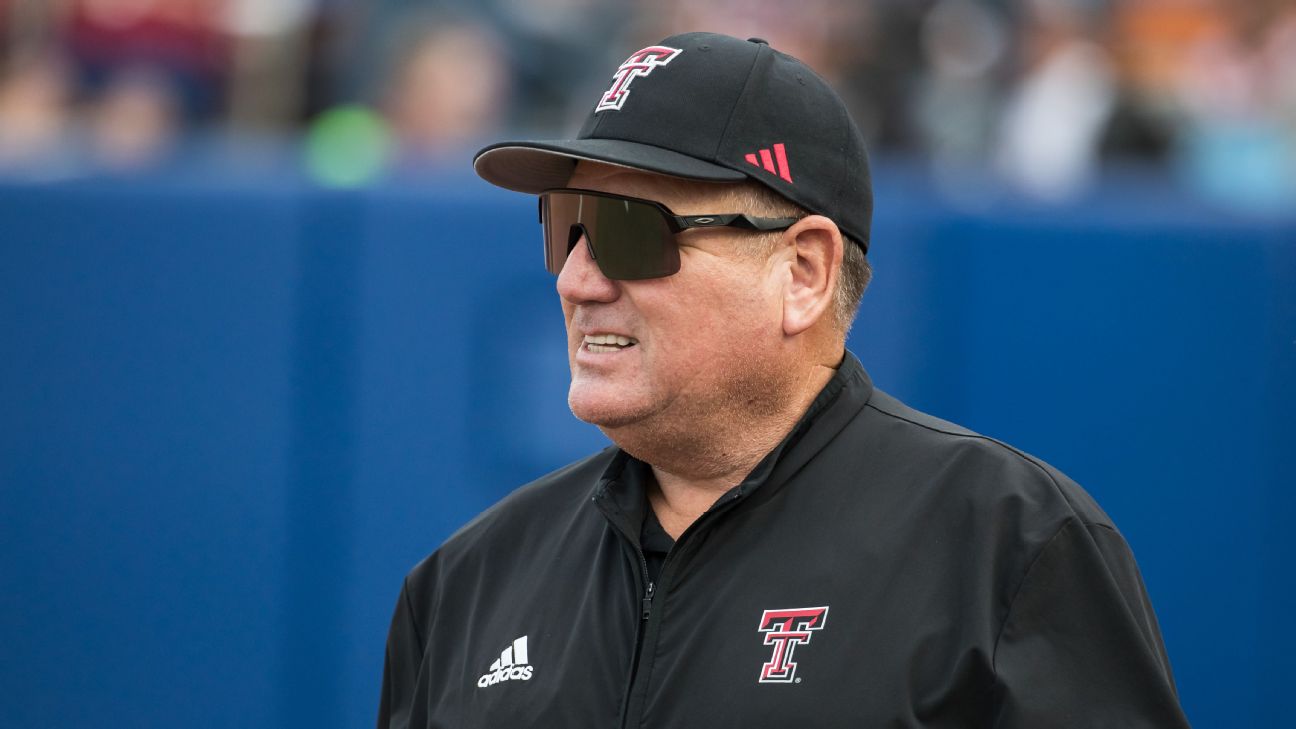
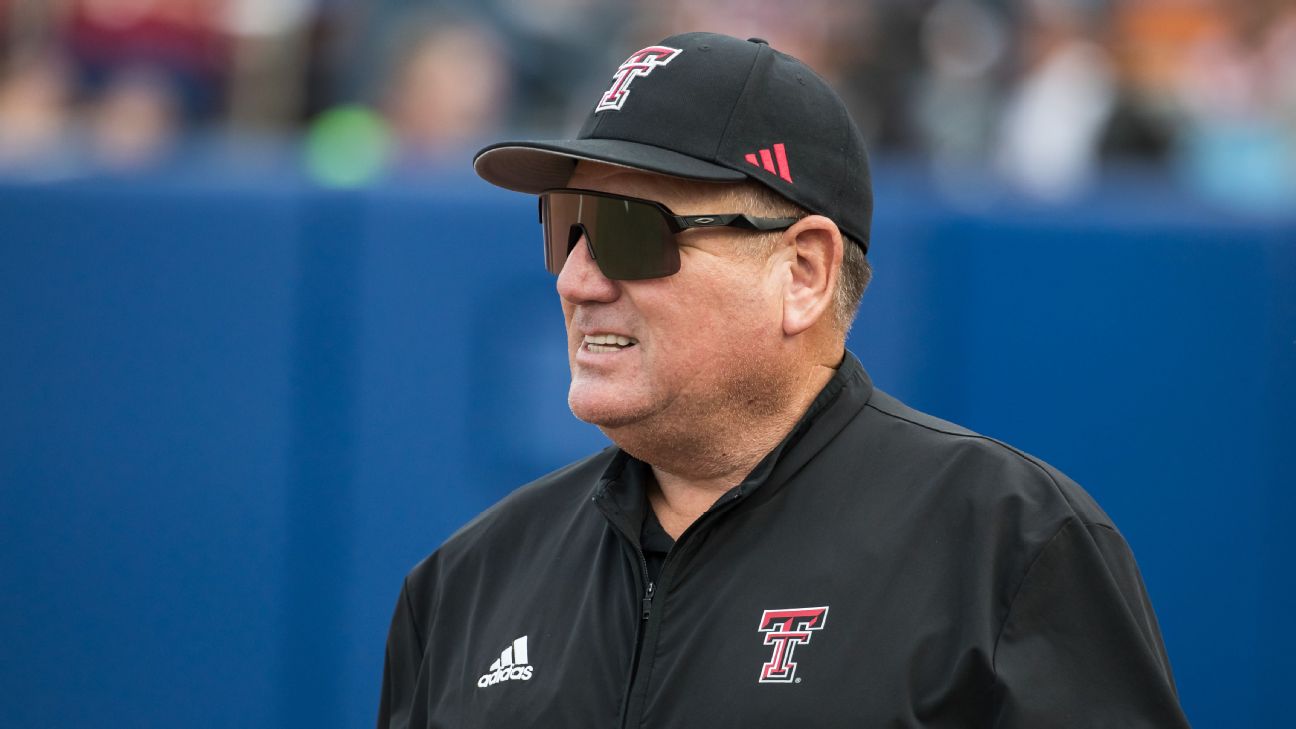
 Gerry Glasco was hired as head coach of the Texas Tech softball team on June 20, 2024. A year later, the Red Raiders have gone from afterthought to headliner, occupying a space in the world of college softball never seen in Lubbock.
Gerry Glasco was hired as head coach of the Texas Tech softball team on June 20, 2024. A year later, the Red Raiders have gone from afterthought to headliner, occupying a space in the world of college softball never seen in Lubbock.
Hours after the Red Raiders returned from their run in the Women’s College World Series, Glasco, his staff and the boosters supporting the program started building toward 2026. First came the commitment of Ohio State catcher Jasmyn Burns. A few days later, the second wave came in with Florida’s Mia Williams, UCLA’s Kaitlyn Terry and Southern Illinois’ Jackie Lis entering the fray.
Then came the commitment of Tennessee’s Taylor Pannell, who hit the transfer portal and pledged to the Red Raiders in the span of a few hours. And on Wednesday night, El Paso native and New Mexico State two-way player Desirae Spearman added her name to the list.
These moves have generated numerous headlines, not all of which are positive. Texas Tech has been accused of tampering — being in contact with players before the end of their seasons with their respective teams — to put together this transfer portal haul. Hearsay is enticing, creates buzz and generates clicks bosses love. The initial claim caught much more traction than another story, from the Austin American-Statesman, which poked several holes in the story from SI, but Tech’s reputation had shifted altogether regardless.
In two week’s time, Glasco has gone from the feel-good story of the sport to the leader of college softball’s equivalent to the Los Angeles Dodgers. The star power brought in to join NiJaree Canady in Lubbock is something never seen before in the sport, and most people aren’t sure how to handle it.
Texas Tech is the new kid on the block, operating behind a group of wealthy alumni motivated to stake a claim in a sport it had little relevance in this time last year. The turn from baby face to heel was swift, sudden and unexpected, causing a ripple effect throughout the sport. It started with bringing Canady to Lubbock, and now the Red Raiders are ready for their second act.

Texas Tech softball roster for 2026 after transfer portal additions, losses
Here’s where the Red Raider roster stands for the 2026 season after the transfer portal window for softball players has closed. Players are listed by school year for the 2025-26 academic calendar.
SENIORS: NiJaree Canady (pitcher/utility), Jackie Lis (infielder), Mihyia Davis (outfielder), Victoria Valdez (catcher), Alana Johnson (outfielder), Chloe Riassetto (pitcher)
JUNIORS: Lauren Allred (first base), Mia Williams (second base), Taylor Pannell (third base), Kaitlyn Terry (pitcher/outfielder), Jasmyn Burns (catcher), Logan Halleman (utility), Makayla Garcia (utility), Desirae Spearman (pitcher/outfielder)
SOPHOMORES: Hailey Toney (shortstop), Samantha Lincoln (pitcher)
FRESHMEN: Mallie West (pitcher), Cimone Edge (first base/catcher), Timber Hensley (pitcher/utility), Mia Richards (first base/catcher)
DEPARTURES: Exhausted eligibility — Alexa Langeliers and Demi Elder; Entered transfer portal — Bailey Lindemuth, Raegan Jennings, Brenlee Gonzales, Sydney Shiller, Anya German and Kiley Huffman.

Why Texas Tech softball’s transfer portal haul is significant
The Red Raiders have all but sewn up their roster for the 2026 roster after Spearman’s commitment. Another name or two could come up in the next week or two, but they could sit tight if they so choose to.
Now the attention turns to putting all these new pieces together, making them fit into a new puzzle. The onus is on Glasco to do just that.
Prior to the 2025 season, Texas Tech had four players in program history named All-Americans by the National Fastpitch Coaches Association. The 2026 team is slated to have four players who were NFCA All-Americans during the 2025 season alone. Canady and Burns were first-team selections while Williams and Pannell were second-team selections.
Texas Tech hit a total of 60 home runs as a team last year. Williams, Pannell, Burns, Lis, Terry and Spearman hit a combined 93 dingers themselves.
Williams, Terry and Lis have been officially announced as signings. Tech is expected to announce the signings of Burns and Pannell in the coming days, Spearman committed late Wednesday night.
Transfer additions have garnered the most attention, though the Red Raiders also have important pieces who have decided to stick around. Mihyia Davis, Hailey Toney, Alana Johnson and Lauren Allred should all return to the starting lineup in 2026. Victoria Valdez is back as well, though her starting catcher spot seems gone with the addition of Burns.
Moving pieces abound for the Red Raiders right now, which makes fall ball even more important for Texas Tech this year. Competition exists for several players on the roster, and team depth is a bit stronger than it was in 2025.
Texas Tech softball building for 2026 and beyond
While the focus for Texas Tech will be to finish things off with a national championship in 2026, something the Red Raiders came so close to doing in Year 1 under Glasco, the moves made over the last few weeks weren’t intended as one-year investments.
Among the in-coming transfers (so far), Lis in the only senior for the 2025-26 season. Williams, Pannell, Terry, Spearman and Burns will also be juniors next season, as will Allred, and Toney will be a sophomore. The entire projected starting infield will have multiple years together, giving Texas Tech a foundation beyond 2026.
Just how will this all work by the time the season officially starts in February? Nobody knows for sure. A year ago, the question was who exactly was going to be in a Red Raider uniform by the time Glasco coached his first game at Texas Tech. This is a much better problem to have for any coach.
-

 High School Sports2 weeks ago
High School Sports2 weeks agoParents Speak Out As Trans Pitcher Throws Shutout In MN State Quarterfinals
-

 Professional Sports2 weeks ago
Professional Sports2 weeks ago'I asked Anderson privately'… UFC legend retells secret sparring session between Jon Jones …
-

 College Sports3 weeks ago
College Sports3 weeks agoIU basketball recruiting
-

 Health2 weeks ago
Health2 weeks agoOregon track star wages legal battle against trans athlete policy after medal ceremony protest
-

 Professional Sports2 weeks ago
Professional Sports2 weeks agoUFC 316 star storms out of Media Day when asked about bitter feud with Rampage Jackson
-

 High School Sports3 weeks ago
High School Sports3 weeks agoThe Arizona Daily Star's top high school athletes, coaches and moments of the 2024
-

 Rec Sports2 weeks ago
Rec Sports2 weeks ago2x NBA All-Star Reacts to Viral LeBron James Statement
-

 NIL3 weeks ago
NIL3 weeks agoNCAA Sends Clear Message About Athlete Pay and Roster Limits
-

 NIL2 weeks ago
NIL2 weeks agoMen's college basketball Top 25 reset
-

 Motorsports2 weeks ago
Motorsports2 weeks agoCorey LaJoie to make nine NASCAR Truck Series starts with Spire Motorsports


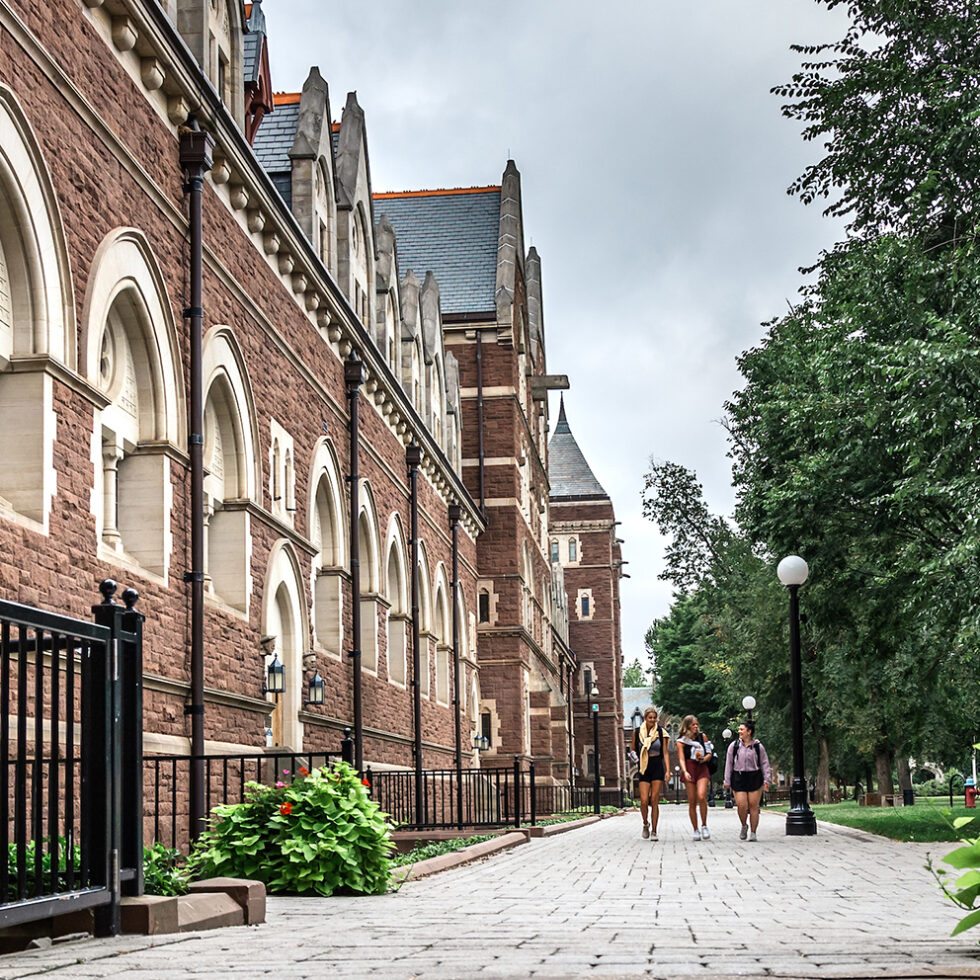













 T.J. McConnell talks about his support for his sister, Megan!
T.J. McConnell talks about his support for his sister, Megan!

















